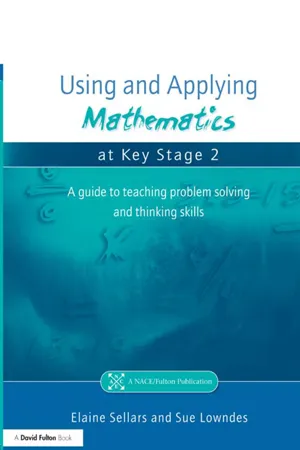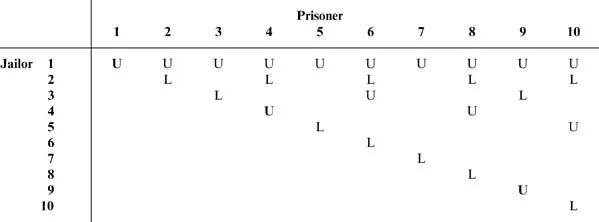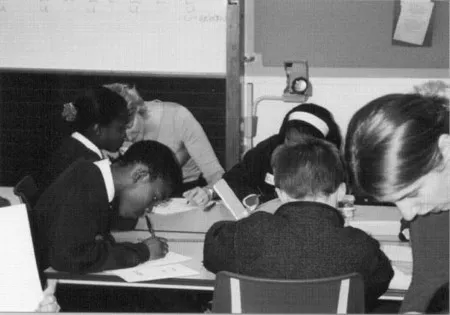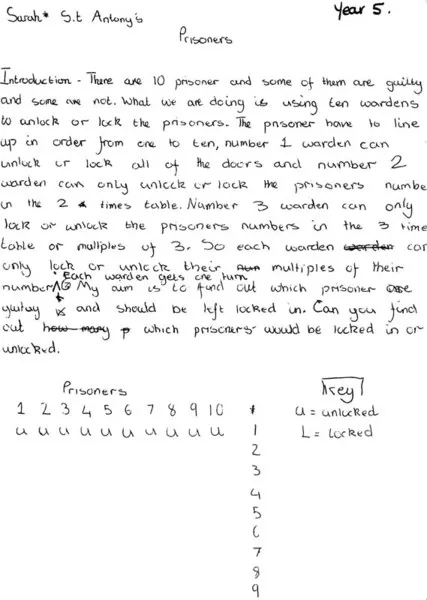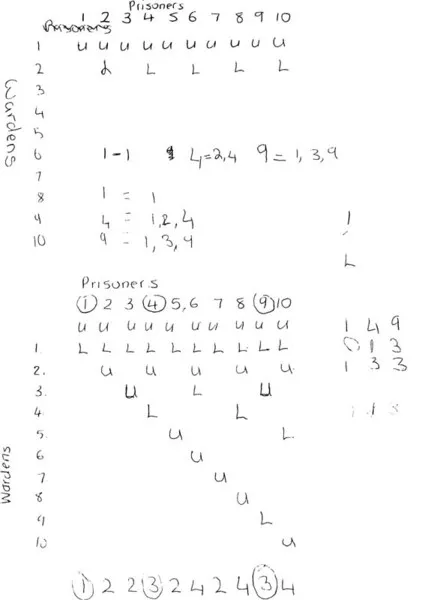![]()
The task
There are ten people in prison cells. They are all locked in. The cell doors will lock and unlock each time a key is turned. However not all of the ten people should be there as some are not guilty. The secret of those who will be set free lies with the jailors.
There are as many jailors as there are prisoners and each jailor has one key.
Jailor number one holds a key that will unlock or lock every door. Jailor number two holds a key which will lock or unlock doors 2, 4, 6,… Jailor number three holds a key which will unlock or lock doors 3, 6, 9,… etc.
After the prisoners are locked in their cells for the night each jailor will visit each cell and try the key in the door. They will only be able to turn the locks on the doors that their key fits.
Which prisoners are set free?
If there are 30 prisoners which ones will be set free?
If you had 100 prisoners which ones would be set free and why?
Introducing the task to your class
As you can see from the photographs on page 8, we labelled both our prisoners and jailors and we managed to find a large, ornate brass key which added to the fun. The children very quickly realised that they should be in numerical order and that the jailors should visit the cells in a systematic way. So jailor number one visited first, then jailor number two etc.
Writing up the investigation
You can see that after the visits from each of the 10 jailors, prisoners 1, 4 and 9 are free to go!
This investigation is a fun way of generating all of the square numbers.
All square numbers have an odd number of factors, and so are visited an odd number of times. Hence, they will also be unlocked by the end.
This is a really useful investigation for exploring factors and multiples as well as investigating square numbers.
When listing factors of numbers it is useful to list the factors in pairs
| e.g. Factors of 12 are |
1,12 |
2,6 |
3,4 |
| i.e |
1,2,3,4,6,12 |
|
|
Children are less likely to leave any out if they list the factors in pairs. So for a square number,
| e.g. Factors of 25 are |
1,25 |
5,5 |
Since we do not need to list 5 twice the factors are 1,5,25
| e.g. Factors of 36 are |
1,36 |
2,18 |
3,12 |
4,9 |
6 |
Extension ideas
You might like to study inverse operations and look at square roots.
What about studying indices? Use the column headings to help introduce this.
This method helps to reinforce that any number to the power of zero is one!
a0 = 1
You may want to use the calculator and use the function button
yx
This function will evaluate any number to any power, as long as the memory is large enough!
![]()
The task
We are at a party and we would like everyone who is there to shake hands with everyone else, but o...
